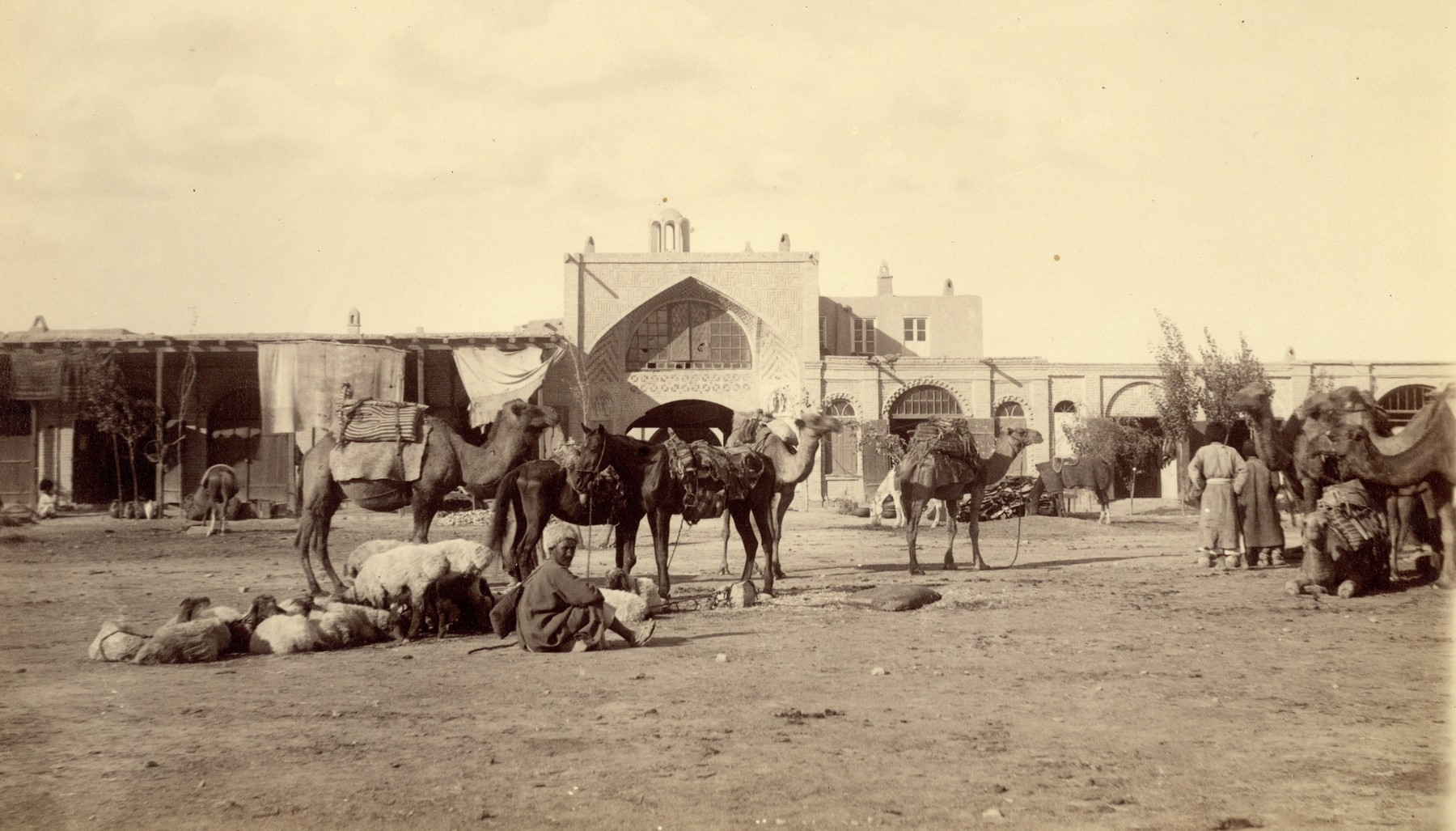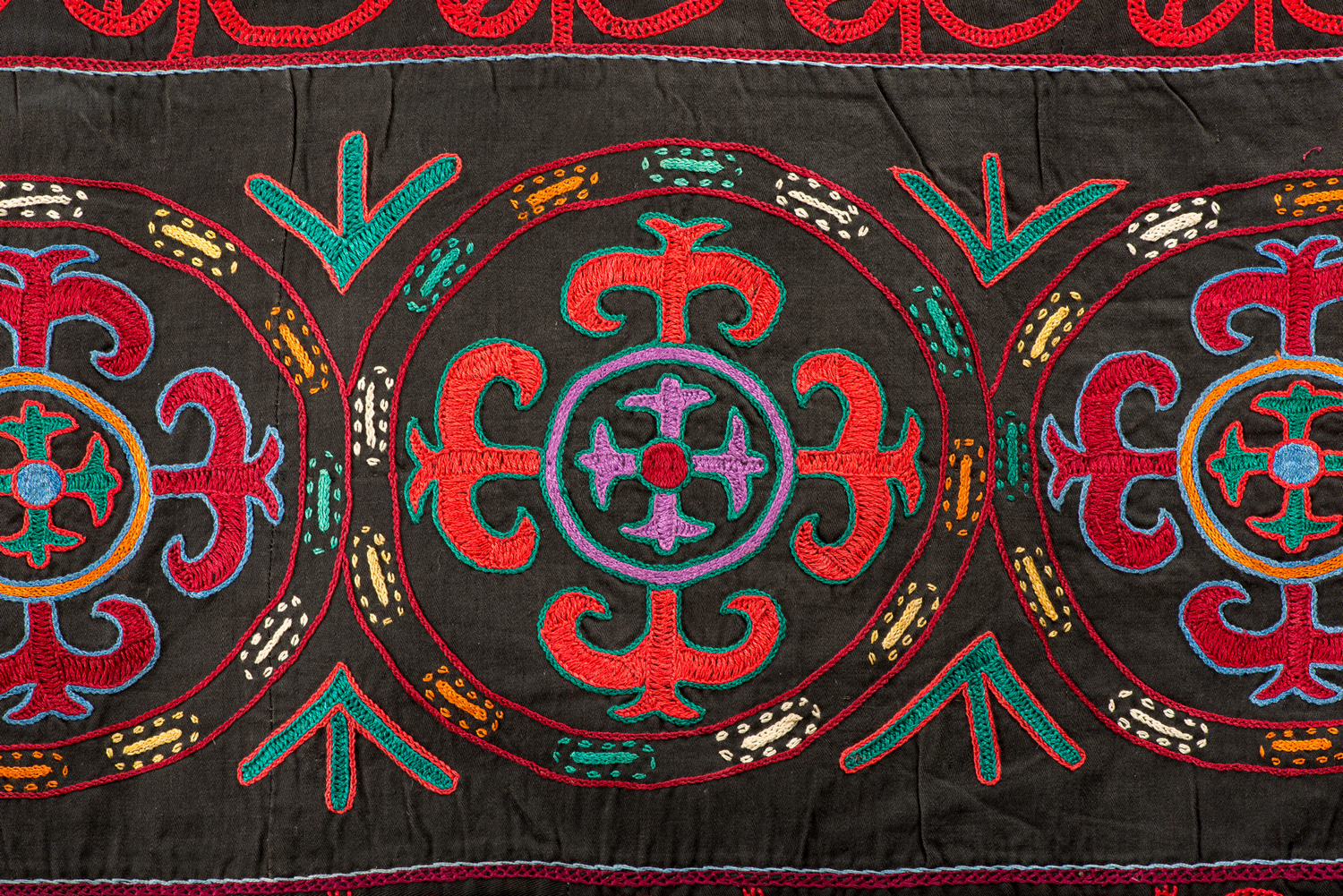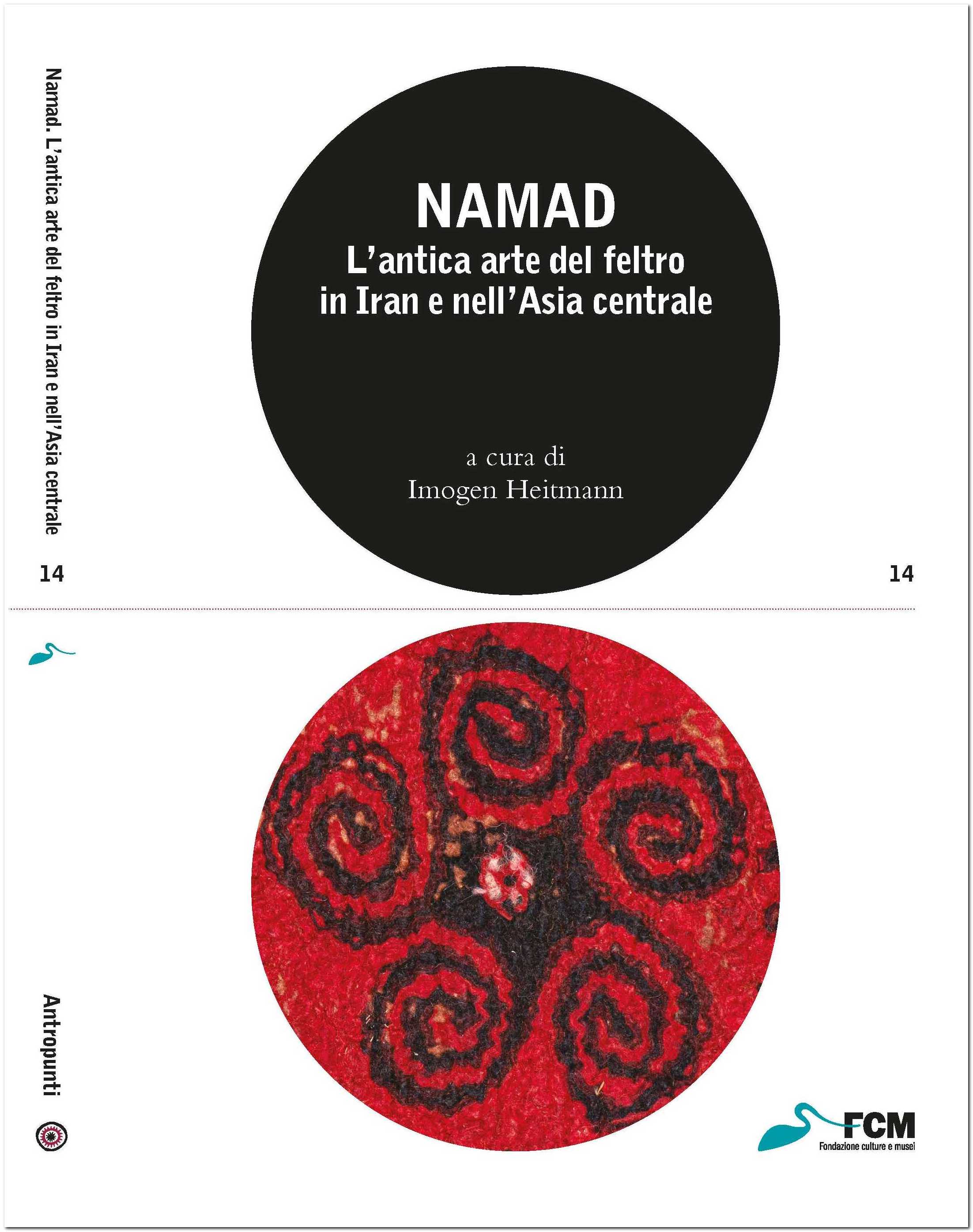Museo delle Culture uses cookies to improve the user experience. If you need more information click on the privacy page. Privacy policy X
01 March 2021 - 03 October 2021, VILLA MALPENSATA
Felt (namad, in Farsi) has accompanied the lives of nomads in a vast geographical area, including Turkmenistan, Iran, Uzbekistan, Kazakhstan, Kyrgyzstan and Afghanistan, for thousands of years.
There are traces of them in Marco Polo's chronicles, but in the West they have long remained in the shadows. It was in the wake of the avant-garde movements' attraction to the so-called 'primitive' arts that the archaic and mysterious character of the ornamental motifs of felts aroused the interest of artists and collectors.
MUSEC's careful research brings to light the complexity that characterises both the splendid artefacts and the cultures that produced them.
Set up in the "Spazio Cielo" on the third floor of Villa Malpensata and curated by Imogen Heitmann, the "Namad" exhibition offers visitors a unique opportunity to discover sixteen works, including felts, embroidered fabrics and traditional tent elements (yurt): all of which bear witness to the fundamental importance of felt in the lives of the peoples of Iran and Central Asia. The works on display were selected from those collected by Sergio Poggianella, gallery owner and art expert, as well as President of the Foundation of the same name in Rovereto. Forty of his felts now belong to the MUSEC permanent collections.

A story told among felt makers in Iran says that Hazrat Suleiman (King Salomon) had a son who was a shepherd. He had tried to use sheep’s fleece to produce a non-woven fabric, but without success. He beat the wool, weeping bitter tears on to his work, and the action of beating the dampened wool transformed the fleece into fabric. Today, he is still the patron saint of felt makers in northern Iran.
One of the most distinctive aspects of felt is its technique. Unlike woven and knotted fabrics, felt is obtained by selecting, cleaning and «assembling» the wool fibres through the felting process. This process relies on the physical, chemical and mechanical properties of natural wool, and on specific work phases that allow the creation of rugs of different genres and styles.
Precisely because it is so immediate and simple to learn, some scholars believe that it is possibly one of the oldest forms of fabric ever created by man.

Felts exhibit an iconographic variety in addition to a variety of techniques. The decorative motifs, difficult to decipher, consist of a codified set of symbols shared by groups living within entire geographical areas, and also found on numerous other media. In this regard, Persian miniatures of the medieval era are particularly relevant. They were created in a historic moment of great importance: during the 13th century the Mongols – initially under the leadership of Genghis Khan – occupied Central Asia integrating the various Turkic groups from the area. At the peak of its extension, the Empire, the largest of the globe, included most of the Asian and Oriental European territories. The great Turco-Mongol leaders had literary and illustrated contemporary history works created, and the latter features traditional felt tends and furnishings. The drawings allow both to see what felts once looked like, and to appreciate the imaginative work of the miniaturists. Although it is highly unlikely that felt tent covers were entirely covered with gold embroidery, felt was undoubtedly a fundamental element of Central Asian material culture.

Edited by Imogen Heitmann and realized by the Fondazione culture e musei of Lugano, "Namad. The ancient art of felt in Iran and Central Asia" is the fourteenth volume of the Collana Antropunti.
The volume accompanies the reader through the discovery of the felt carpet, an object as ancient and widespread as it is mysterious, revealing the role it played in the history of contact between Europe, Iran and Central Asia.
The catalog contains:
The following articles:
The volume is completed by a rich section of APPARATUS

Namad, l'antica arte del feltro in Iran e Asia centrale, edited by Imogen Heitmann, pp. 304, 264 ill. ISBN 979-12-80443-14-4. CHF 30